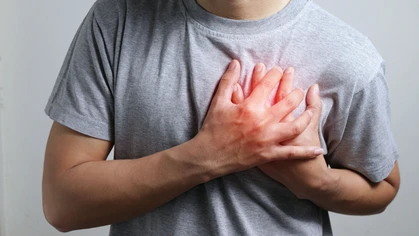Thrush in Men and Women: Causes, Symptoms, and Treatment

Disease

Thrush is a common fungal infection that affects both men and women alike. It is caused by an overgrowth of a fungi called Candida albicans. Without treatment, thrush can cause severe pain.
Thrush is a common fungal infection that can affect both women and men. It’s usually harmless, however the infection can reoccur and can be very uncomfortable if left untreated. This fungal infection can occur in both the genital area or in the mouth as oral thrush. In this article, the thrush referred to is the genital variant.Thrush: What Is It?
Thrush (or candidiasis) is a common fungal infection caused by a type of fungi called Candida albicans. Thrush can affect both women and men due to an overgrowth of Candida albicans. This fungus is a natural resident of the body; and due to the warm and moist environment of our bodies, this can cause the fungus to grow faster than our immune system’s ability to keep it in check. This can lead to an overgrowth of fungi, causing the fungal infection known as thrush. Most common places this can occur include:- The mouth, throat, and oesophagus – also known as oral thrush,
- Folds in the skin such as our armpits and between the fingers, and
- Underneath the foreskin of the penis or around and inside of the vagina.
- Poor hygiene,
- Weakened immune system resulting from severe infections such as HIV infection, cancer treatments, or taking immunosuppressant drugs,
- Obesity – as folds in the skin can create the ideal environment, and
- Diabetes mellitus – high levels of blood sugar can help fungal infections begin in the first place.
Thrush Symptoms in Women and Men
Symptoms of thrush vary between the individual, but here are some common symptoms for both women and men. Thrush symptoms in women:- Itching and irritation of the vagina,
- White or yellow vaginal discharge that may or may not smell,
- Discomfort during sexual activities, and
- Stinging when urinating.
- Irritation, burning, and redness around the head of the penis and under the foreskin,
- White discharge and an unpleasant smell,
- Pain and discomfort during sex, and
- Difficulty pulling back the foreskin.
Medical Treatment: When Should You Seek It?
Thrush in itself is not a serious infection and is not a sexually transmitted infection (STI). However, men can sometimes contract thrush from having intercourse with a woman who has the fungal infection. If left untreated, it may result in life-threatening infections in other parts of the body such as the heart, eyes, brain, and bones. You may not need to see a doctor unless:- You have the symptoms of thrush for the first time,
- You are under the age of 16 or over 60,
- You are experiencing recurring thrush – more than 4 times in 12 months,
- You are pregnant or breastfeeding, or
- You have a weakened immune system due to other conditions such as diabetes, HIV infections, or chemotherapy.
Recurring Thrush
If your treatment doesn’t look like it’s working or if you get thrush twice within the span of 6 months, you should see a doctor as it may be an indicator of other health problems or a drug-resistant type of Candida. Here are some common reasons why thrush treatment may fail:- Symptoms may not be due to thrush,
- Your thrush may be caused by a different strain of Candida such as Candida glabrata which may be resistant to anti-thrush medicines, or
- You may have not used the treatment correctly.
Preventing Thrush
While thrush is rarely dangerous, it’s important to take precautions in preventing thrush from occurring again in the future. This will not only help reduce your chances of having recurring thrush but also improve your overall genital hygiene. Here are some practices you can implement to prevent thrush in the future. These practices apply to both women and men wherever is relevant:- Wipe your bottom from front to back after going to the toilet – this will help prevent the spread of Candida albicans from the anus to the vagina,
- Make sure to pull back the foreskin and thoroughly wash the head of the penis daily,
- Avoid using deodorants, talcum powder, scented soaps, or body wash on the genital area
- Avoid perfumed toilet papers,
- Avoid wearing tight-fitting pants or jeans, nylon shorts and synthetic underwear to prevent creating a warm and moist environment for the fungus to thrive, and
- Consider changing your laundry detergent and don’t use fabric softeners.
Conclusion
By taking precautions, noticing the symptoms, and speaking to a doctor, thrush can be easily prevented and treated. If you are unsure about the symptoms, your doctor would be able to determine if you are suffering from thrush. To learn more about identifying, managing, and preventing the symptoms of different health conditions, book a First Aid course with us today.
Originally published at
https://www.australiawidefirstaid.com.au/resources/thrush-in-men-and-women
as part of the Australia Wide First Aid Articles Library









